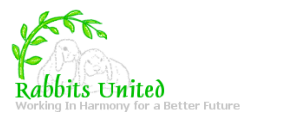Right, this is going to be a bit of a confused post so bear with me!
Alf has had a recurring weepy eye that comes and goes, for a while. We've been to the vets a few times and Friday he saw the exotics specialist (very experienced with rabbits). She said nothing is wrong with the teeth she can see, which is good, but she's thinking it may be his roots which is damaging his tear ducts? They're not blocked, but it's something to do with the scar tissue building up as his roots press upwards and this causes a funny eye? Apparently the next step would be xrays to check his roots (which is £130 alone, I don't know how we're going to afford this ) , then a lifetime of eye drops or something to try and manage his problem?
) , then a lifetime of eye drops or something to try and manage his problem?
I wasn't at the appt, Mum was, as I had to stay at home with Roo. Can anyone shed some light on this, as I am still very confused?!
Also, what do the eye drops do? Alfie is not bothered in the slightest by his eye - he's not in pain, Roo cleans it for him very well love
love and I've never seen him irritated by it in the slightest, so am reluctant to put him on a course of eyedrops for life when he is a very difficult bun to handle as it is, if all it does is keeps the eye moist or whatever! Obviously if it has real benefits then I will, but it doesn't seem to be causing him any pain or discomfort as it is :?
and I've never seen him irritated by it in the slightest, so am reluctant to put him on a course of eyedrops for life when he is a very difficult bun to handle as it is, if all it does is keeps the eye moist or whatever! Obviously if it has real benefits then I will, but it doesn't seem to be causing him any pain or discomfort as it is :?
Any help would be greatly appreciated, I'm quite upset at the prospect of subjecting him to a life of treatment, and possible ops/xrays etc, and there is the added worry that we are skint as it is.
Alf has had a recurring weepy eye that comes and goes, for a while. We've been to the vets a few times and Friday he saw the exotics specialist (very experienced with rabbits). She said nothing is wrong with the teeth she can see, which is good, but she's thinking it may be his roots which is damaging his tear ducts? They're not blocked, but it's something to do with the scar tissue building up as his roots press upwards and this causes a funny eye? Apparently the next step would be xrays to check his roots (which is £130 alone, I don't know how we're going to afford this
I wasn't at the appt, Mum was, as I had to stay at home with Roo. Can anyone shed some light on this, as I am still very confused?!
Also, what do the eye drops do? Alfie is not bothered in the slightest by his eye - he's not in pain, Roo cleans it for him very well
Any help would be greatly appreciated, I'm quite upset at the prospect of subjecting him to a life of treatment, and possible ops/xrays etc, and there is the added worry that we are skint as it is.

